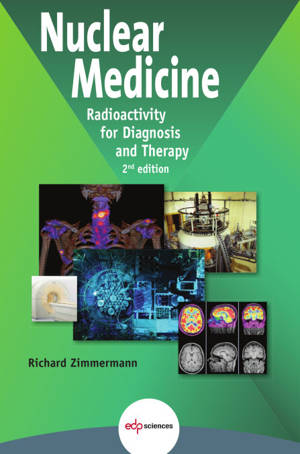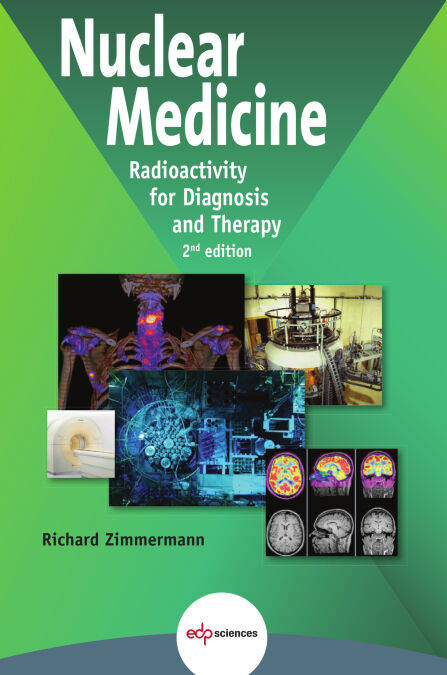
- Retrait gratuit dans votre magasin Club
- 7.000.000 titres dans notre catalogue
- Payer en toute sécurité
- Toujours un magasin près de chez vous
- Retrait gratuit dans votre magasin Club
- 7.000.0000 titres dans notre catalogue
- Payer en toute sécurité
- Toujours un magasin près de chez vous
12,99 €
+ 12 points
Format
Description
Nuclear medicine is a growing specialized medical field in which radiopharmaceuticals, i.e. drugs associated to radioactivity, are used for diagnostic or therapeutic purposes. Since 1942, nuclear medicine has progressed in such a way that it became a major diagnostic tool in hospitals. The past ten years have seen the introduction of major technical breakthroughs which will considerably modify the landscape of cancer treatment.
Once injected to the patient, the radiopharmaceutical drug aims at the tumour cell – including metastases – selectively, settles there, and emits radiation. Depending on the radiation type, the drug will either help identify the cells or destroy them. Applications are not limited to oncology; indeed, nuclear medicine has found interesting applications in cardiology and neurology as well.
The new millennium saw the introduction of the Hybrid imaging technology PET/CT which combines the Positron Emission Tomography (PET) modality with conventional high quality x-ray imaging. It took another two years until PET could be combined with Magnetic Resonance Imaging (MRI) in the hybrid equipment PET/MR. New tracers (drugs for diagnosis) also came on the market with different diseases as targets, such as prostate cancer, neuroendocrine tumours, or Alzheimer’s disease. But the recent introduction of radiotherapeutics in the treatment of cancer has brought major changes on the market, for they can be much more powerful and specific than chemotherapeutics or external radiation therapy. Combining radiodiagnostics to select positive responders to a treatment with efficient radiotherapeutics opens a highway for the development of theranostics, another word for personalized medicine.
This scientific book aims to introduce nuclear medicine to a larger audience, pointing out, among other things, the difficulties met by both physicians and patients when trying to access new technologies. This second edition shows how much progress has been made over the past ten years since the original book was published, and how much can be expected for patients within the next few years.
Once injected to the patient, the radiopharmaceutical drug aims at the tumour cell – including metastases – selectively, settles there, and emits radiation. Depending on the radiation type, the drug will either help identify the cells or destroy them. Applications are not limited to oncology; indeed, nuclear medicine has found interesting applications in cardiology and neurology as well.
The new millennium saw the introduction of the Hybrid imaging technology PET/CT which combines the Positron Emission Tomography (PET) modality with conventional high quality x-ray imaging. It took another two years until PET could be combined with Magnetic Resonance Imaging (MRI) in the hybrid equipment PET/MR. New tracers (drugs for diagnosis) also came on the market with different diseases as targets, such as prostate cancer, neuroendocrine tumours, or Alzheimer’s disease. But the recent introduction of radiotherapeutics in the treatment of cancer has brought major changes on the market, for they can be much more powerful and specific than chemotherapeutics or external radiation therapy. Combining radiodiagnostics to select positive responders to a treatment with efficient radiotherapeutics opens a highway for the development of theranostics, another word for personalized medicine.
This scientific book aims to introduce nuclear medicine to a larger audience, pointing out, among other things, the difficulties met by both physicians and patients when trying to access new technologies. This second edition shows how much progress has been made over the past ten years since the original book was published, and how much can be expected for patients within the next few years.
Spécifications
Parties prenantes
- Auteur(s) :
- Traducteur(s):
- Editeur:
Contenu
- Nombre de pages :
- 216
- Langue:
- Anglais
Caractéristiques
- EAN:
- 9782759821495
- Date de parution :
- 24-04-18
- Format:
- Ebook
- Protection digitale:
- Digital watermarking
- Format numérique:

Les avis
Nous publions uniquement les avis qui respectent les conditions requises. Consultez nos conditions pour les avis.






